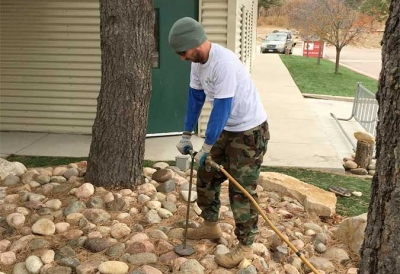Keep trees hydrated in drought conditions with deep root watering
Deep Root Watering
Under ideal conditions, all of a tree’s needs are met. Enough sunshine facilitates photosynthesis, a proper location ensures that roots have plenty of room to spread and pull nutrients from the soil and adequate water keeps a tree’s circulatory system running smoothly. But too much or not enough of any of these resources can stress and weaken a tree, requiring human intervention.
According to the Colorado State University Extension, “Growing trees [in this area] is difficult in wet years, let alone in drought years. Properly placed and maintained trees are an asset to the  environment and to our community.”
environment and to our community.”
Sometimes the toll drought take on trees can be immediately seen, other times it may be as long as two years before effects are obvious. Wilting, yellowing or curling leaves are the most common symptoms, but individual trees often have their own signs. Brown areas, called scorch, is a sign of drought injury with deciduous trees. Smaller than normal leaves, leaves that drop early or leaves that don’t drop at all can appear under extended drought conditions. Evergreen needles can turn a variety of colors including yellow, red, purple or brown at the tips.
Deep Root Watering Methods
In drought conditions, one of the best ways to deliver water to a tree is deep root watering. “Deep” is a relative term since most tree roots are located 12” to 18” beneath the soil. Tree roots reach outward from a tree trunk in a dripline – the end of a tree’s branches. That’s where a deep watering tool is inserted into the ground to a depth of about 12” and a slow stream of water is pumped in. The process is repeated around the dripline. The process is slightly different for evergreens. Watering starts 3’ to 5’ beyond the dripline.
Take the guess work and time commitment out of deep root watering by calling the tree specialists at SprayTech, 720-248-0000.


Comments are closed.